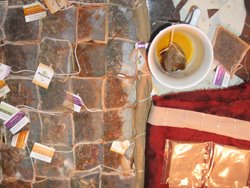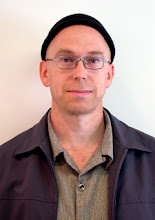Call forth your hungry ghosts and give them somethin' yummy!
 Tonight at 6 PM we will have a Sejiki Ceremony at City Center. This ancient ceremony (the link from China in the Ritual post below captures a more complicated, six-hour version) invokes hungry, unsatisfied beings to come forth and be fed. We mix it up a bit with Halloween here at SFZC so it can get a little wild. But it's important to remember that these hungry ghosts, this deep, painful, unsatisfied restlessness is the root cause of much evil in our world, the source of our fear and suffering. So it's also good to respect and support the ritual that is calling them forth, feeding them and (very important) sending them back.
Tonight at 6 PM we will have a Sejiki Ceremony at City Center. This ancient ceremony (the link from China in the Ritual post below captures a more complicated, six-hour version) invokes hungry, unsatisfied beings to come forth and be fed. We mix it up a bit with Halloween here at SFZC so it can get a little wild. But it's important to remember that these hungry ghosts, this deep, painful, unsatisfied restlessness is the root cause of much evil in our world, the source of our fear and suffering. So it's also good to respect and support the ritual that is calling them forth, feeding them and (very important) sending them back.From an article by Vicki Austin, originally published in Wind Bell:
The process of the ceremony setting a protected space, inviting the shadow in a ceremonial space in which it can be safely held, and meeting it with everyday kindness through our Bodhisattva vow—is an enactment of our deepest compassion. In practice we have to be able to enter hell for the benefit of a suffering being, whether it’s ourselves or someone else. We have to be able to be moved and have our practice continue. The deepest compassion is to feed the hungry and nourish the unsatisfied in body, speech, and mind, just when an opportunity presents itself. At Segaki, we activate the mind that can do this, and follow it with a rousing celebration of haunting and freedom, shadow and light.
Here's the full essay. So have some fun and get a little wild. Play with the shadows and dance with the strange and hidden but in the middle of it all try to keep close the reason you practice.











